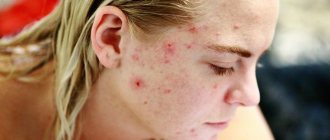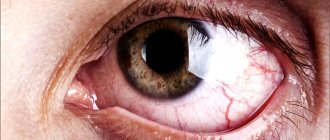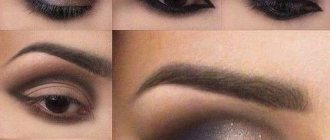A rash on the palms cannot be called a disease, since it is more of a symptom. You should take your health and any deviations from the norm seriously. These rashes can appear in a person at any age.
Are you having any problem? Enter “Symptom” or “Name of the disease” into the form, press Enter and you will find out all the treatment for this problem or disease.
The site provides reference information. Adequate diagnosis and treatment of the disease is possible under the supervision of a conscientious doctor. Any medications have contraindications. Consultation with a specialist is required, as well as detailed study of the instructions! Here you can make an appointment with a doctor.
Why does a rash appear on the palms of the hands?
To interact with the outside world, a person mainly uses his hands. A rash on the palms can be the result of many skin diseases.
Contact dermatitis can contribute to the formation of rashes. The disease is a reaction to touching various chemicals.
Touching any plants can be dangerous because not all of them are harmless. Poisonous plants, such as ivy, can cause skin irritation and rashes.
Why do they appear in adults and children?
Among the causes of rash on the palms there are various conditions characteristic of adults or children. It is difficult to say with what probability a particular disease may appear in a particular case. Therefore, any spots require differential diagnosis, the basis of which is differences in the clinical picture.
Itchy with scabies
Scabies is a parasitic disease caused by mites. It mainly affects children and young people, becoming infected from a sick person through direct contact or through household items (bed linen, towels, washcloths). At the site of tick penetration, a small blister forms on the skin, but the first and most pronounced symptom is itching, which intensifies in the evening and at night.
Favorite localizations for rashes are the interdigital folds of the hands, the lateral surfaces of the fingers, and the wrists. In these places, paired papulovesicles and scabies ducts are formed, which look like dashed dotted lines. Due to severe itching, scratches and crusts appear. A secondary infection can penetrate through them, so the disease is often complicated by pyoderma.
The introduction of streptococcal flora leads to the appearance of flabby blisters (phlycten) filled with transparent contents. The proliferation of staphylococci provokes the appearance of pustules (pustules) located around the mouths of the hair follicles. The covering of the cavity elements shrinks into a crust, under which healing takes place.
Tingling and itching from allergies
If your palms are covered with itchy rashes that appear some time after contact with any substance, you should think about allergic dermatitis. Changes are limited to the area of influence of the stimulus and are represented by the following elements:
- Redness.
- Swelling.
- Bubbles.
- Papules.
In this case, the skin of the hands is usually affected, but in some patients the rash spreads to closed areas of the body. With repeated contacts, the affected area increases, dermatitis turns into eczema, which is characterized by the following symptoms:
- Severe exudation (wetting).
- Symmetry of the lesion.
- Allergization of the body.
Unlike dermatitis, eczema does not go away once exposure to the causative agent is eliminated. During the transition to the chronic form, against the background of drying crusts, infiltration phenomena increase, the skin pattern intensifies, and peeling appears. The disease can last for years.
Red itchy spots on the palms are a symptom of skin diseases of an allergic nature: dermatitis and eczema.
Itching and rashes due to fungus
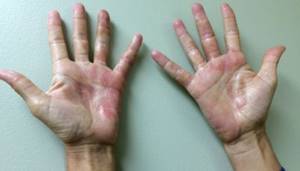
Damage to any areas of the skin is observed with dermatomycosis. Spots on the hands can occur with microsporia or trichophytosis, especially characteristic of children and adolescents. Usually they become infected through direct contact with a patient or through infected objects. In addition, microsporia can be transmitted from domestic animals (cats, dogs).
Fungal skin infections appear as red, scaly spots that are round or oval in shape. Their outer edge is somewhat swollen and raised, and the center sinks and becomes lighter, which creates the appearance of rings. Papules, blisters, crusts and scales are noted along the periphery. The lesions can merge with each other, covering large areas and taking on irregular shapes.
Along with spots on the hands, the scalp is also affected in children. There, infiltrated lesions with redness and peeling appear, within which bald patches are observed. Hair breaks off near the skin (trichophytia) or at a level of 6–8 mm from it (microsporia). Smaller “dropouts” appear around large foci.
Points on the skin for infections
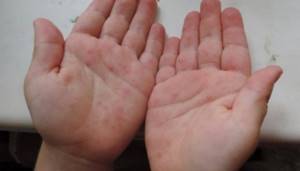
Skin rashes, including on the palms, occur with some infections of a viral or bacterial nature. Usually the following conditions have to be excluded:
- Measles.
- Rubella.
- Meningococcal infection.
- Simple herpes.
- Syphilis.
Moreover, each disease has its own characteristics. Measles is characterized by the appearance of maculopapular rashes with a clear stage: head and face, torso, limbs. In the prodromal period, catarrhal symptoms (runny nose, dry cough, conjunctivitis) are typical. At the end of the disease, the rash becomes pigmented and peels off.
Rubella is accompanied by small-spotted rashes on the skin that appear almost instantly and disappear without a trace. A characteristic sign is an increase in the posterior cervical and occipital lymph nodes. At the onset of the disease, prodromal symptoms, pharyngitis, are present.
The rash with meningococcal infection first looks like roseola and papules, but then becomes hemorrhagic in nature with necrosis in the center (stellate elements). In this case, the child’s condition is serious, the temperature rises to high numbers, in fulminant forms vascular insufficiency occurs, and renal function is impaired.
Blistering rashes with herpes simplex are localized not only on the lips or genitals, but can also be found on other parts of the body. Hands are affected both during primary infection and during autoinoculation, when the infection is transferred from another area. The blisters are located in a limited area with redness and swelling, accompanied by itching and burning.
Spots on the palms and soles occur in the secondary period of syphilis, appearing after healing of the chancre. The rash is represented by red or brown elements, is not accompanied by itching, and disappears without treatment within a month. Other symptoms of infection also appear - fever, swollen lymph nodes, sore throat, joint pain, weakness.
Infections are a fairly large and heterogeneous group of causes of rashes on the hands. Each disease has certain clinical features.
Redness on the hands and feet
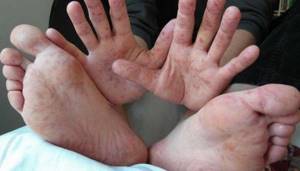
The skin of the palms and feet can be affected simultaneously, which indicates the systemic nature of the changes. This usually happens in several situations:
- Hand-foot syndrome.
- Erythrosis (Lane's disease).
- Psoriasis.
In response to the use of certain chemotherapy drugs (doxorubicin, fluorouracil, cytarabine), redness, peeling, and blisters may appear on the palms and soles, accompanied by tingling, burning, and pain. Symptoms appear after a month of therapy and disappear after its cessation.
Erythrosis or Lane's disease is a hereditary pathology that debuts in childhood and is associated with an anomaly of vascular anastomoses on the palms and soles. The main symptom is the appearance of large spots of bright crimson color with clear boundaries, more pronounced in the area of the elevations of the thumb and little finger. They never spread to the back surface or other parts of the limbs and do not cause physical discomfort.
Psoriasis of the palms and soles is rare, creating some difficulties in diagnosis. The rashes are represented by flat papules with a silvery surface, which gradually increase in size, transforming into scaly plaques. Prone to merging, they can create lesions of bizarre shapes, accompanied by moderate itching.
Other reasons
The origin of red spots on the palms is very diverse. The symptom is a consequence of external influences, for example, friction during intense manual labor or the action of chemicals (alkalies, acids) when working without gloves. Insect bites, exposure to cold, solar radiation - all this can cause redness.
In addition to local factors, metabolic disorders in the body may be involved in the appearance of spots. Palmar erythema can be a sign of various diseases:
- Liver failure.
- Rheumatoid arthritis.
- Thyrotoxicosis.
- Leukemia.
Itching and redness occur with helminthiasis, anemia, and polycythemia. An important role is played by hormonal disorders in ovarian dysfunction in women and poisoning by toxic compounds.
Red spots on the palms are a fairly common symptom. Its cause will become clear based on the results of a comprehensive examination.
Types of subcutaneous formations on the palms
Subcutaneous rashes come in different shapes and colors. They may appear as simply red spots that are caused by dilation of blood vessels.
They will vary in diameter: from a few millimeters to 3 centimeters. They may cause itching, or they may simply be present.
Sometimes patients complain of the appearance of “pimples” on the palms of their hands. The rash is not very pronounced. More often it starts to turn red in the morning, and there is a slight itch. But after a couple of hours, all this goes away and a small “bag” with white contents remains under the skin.
This “pimple” cannot be squeezed out, since the skin on the palms is stronger than on the face. Pimples that may appear on the face are located closer to the surface of the skin than on the palm.
A bag of fluid may appear under the skin. It does not cause itching and turns red if the area is scratched. And when touched and pressed, the patient begins to feel as if this place is being tingled with needles.
If you puncture this pouch, you will feel it all the time afterwards. When touched, pain will occur, since this is an open area without a top layer of skin that protects from external influences.
Otherwise, they go away on their own in about a week without proper care. But if you tear off the skin, healing will take longer, and the possibility of infection in the resulting wound increases. But if you leave the rash without treatment, it will reappear after some time.
Some patients develop many small red dots on the palms of their hands. They often cause itching.
The causes of all this are erythema, eczema, herpes zoster or common herpes.
How to treat a small formation if it itches
The appearance of a small rash on a person’s palms is unpleasant, because it is often accompanied by itching and redness, and therefore causes physical discomfort.
It becomes unpleasant to look at hands, and strangers, when they see the patient’s hands, feel disgust and even fear that this may be passed on to them.
It is not contagious, but it is impossible to explain this to every person.
There are several causes of small rashes on the hands. Especially if these rashes are accompanied by itching sensations.
If this appears for the first time or occurs at regular intervals, then it is associated with household chemicals. These will be both detergents and shower gels. You need to carefully approach the choice of such products, based on their composition.
It is advisable if you wash dishes, floors and other objects wearing rubber gloves, which can protect the skin of your hands from the effects of chemicals.
Soap must be chosen with a natural composition, and do not forget to use various hand creams. This will preserve their health and beauty for a long time.
In addition to the external environment, you need to take care of your inner “world”. A small rash can be caused by problems with the human digestive and nervous system.
In advertising on TV you can learn that skin problems can arise from eating unhealthy foods. And even if you don’t watch your diet. This has a harmful effect on the body, and skin problems can be considered as a special case.
The immune and nervous systems have a major influence on maintaining healthy skin. They help the normal functioning of almost all human organs, which give the skin a healthy and beautiful appearance.
If you stop caring about how many vitamins the body acquires through food or any supplements, then you can say goodbye to the beauty of your skin. Stress is harmful to health.
If you start an allergic reaction, which is more common and is the cause of small rashes on the palms, then it can develop into eczema, which is even more difficult to cope with.
It’s also worth keeping an eye on your hormonal levels; they have a strong influence on the condition of your skin. Often problems with it arise due to the use of products containing hormones. More often, these are oral contraceptives, which in everyday life are simply called contraceptives.
Treatment is simple - to do this, you need to exclude or cure the causes that cause the rash. Before starting treatment, you need to consult a dermatologist who will identify what caused this problem and how to deal with it.
You cannot determine diseases on your own, because you can harm yourself.
It is strictly forbidden to smear brilliant green or iodine on the rash that has arisen, as this will complicate the diagnosis.
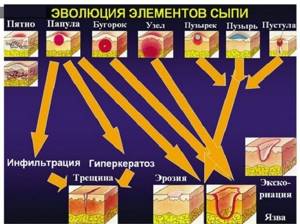
Once the dermatologist has identified what caused the small rash, treatment can begin.
A rash is an allergic reaction to household chemicals, so you should either stop using it and replace it with something more gentle, or switch to using it in combination with rubber gloves. After any contact with water, you should subsequently lubricate the skin of your hands with moisturizer.
If the cause is poor hormonal levels, problems with the gastrodigestive tract, immune or nervous system, then the dermatologist will give a referral to the appropriate doctors for testing. They will create a treatment plan that the patient will need to follow.
Why do red dots appear on the hands and how dangerous are they?
Spots on the body appear for various reasons: an allergic reaction, infectious and autoimmune diseases, stress and much more.
Red dots on the hands may turn out to be a benign skin formation, so consultation with a specialist is necessary. In some cases, it is impossible to cure the pathology, but it is still necessary to find out the causes of its occurrence.
You will have to contact a dermatologist, surgeon or therapist who will tell you what to do about the problem.
What could it be
Any change in the dermis, be it spots, spots and small pimples, appears due to internal disorders and environmental influences. The disease is popularly called pimples, goose bumps or chicken skin.
In fact, medicine has many more possible causes and terms: dermatitis, allergies on the hands in the form of red spots, blood vessel disorders, infectious diseases, contagious and autoimmune pathologies.
Most often, the rash goes away on its own after a few days, but sometimes medical attention is required. The most common causes of red bumps:
- Allergic reaction. The list of allergens includes almost everything that surrounds a person: water, air, food, cosmetics, household products, clothing, jewelry, money, animals. Finding out what exactly is causing the irritation is not always possible without allergy testing.
- Damage to blood vessels. The disease appears for various reasons - a lack of vitamins, diseases of the circulatory system, changes in hormonal levels. Sometimes small red dots are angioma or hemangioma on the skin, that is, a benign formation. Dried blood under the skin does not hurt, but it causes psychological discomfort to a person.
- Contagious diseases. This group includes spots caused by subcutaneous mites, rubella, scabies, bark, and various bacterial infections.
- Non-infectious pathologies. Red rashes often appear on the skin due to disease of the pancreas and other organs of the gastrointestinal tract. You can notice spots with diabetes or autoimmune diseases.
- Avitaminosis. A lack of vitamins in the body provokes a number of disorders, due to which red spots subsequently appear throughout the body.
Rashes often form after severe stress. Often, red blood spots on the body spread quickly and become itchy. They go away on their own after a few days, but sometimes sedatives are required. At risk are pregnant women, young children and older people who have a weak immune system or unstable hormonal levels.
Sometimes small spots that look like droplets of blood are moles. They can be distinguished from diseases by their appearance. A mole always has a semicircular shape and clear edges, a smooth structure, and a uniform color.
Black moles exist and they are not dangerous if they appeared on the arm a long time ago and are no different from ordinary ones.
If the red dots itch, grow, change shape, color, hurt, or secrete fluid, a consultation with an oncologist or surgeon is necessary.
I am looking for a treatment method on the Internet
Localization of the rash on the hands
Based on the location of the rash, one can understand the provoking factors. For example, a large red spot on the hand appears more often after contact with aggressive substances.
Some household chemicals cause dermatitis, eczema or hives. Allergic rashes to food, medications, pollen, or animal dander manifest differently.
As a rule, redness covers large areas of the body, and is not just localized on the wrists.
However, rashes on the hands in the form of red dots also appear due to impaired blood circulation or problems with blood vessels. Hemorrhage can be seen on the backs of the hands and on the forearm.
Skin hemangiomas often appear in these same places. The dermis above the elbow is more often subjected to mechanical stress, which often causes keratosis.
The epidermis becomes dry, covered with white scales and pink spots.
Fingers and nails are more susceptible to infections and injuries, which is why some diseases begin in the hands. Fungal infections and scabies are often transmitted through a handshake.
It is necessary to exclude all contagious pathologies by identifying spots on your hands or your child.
If red ulcers appear on the body and spread quickly, most likely they are infectious in nature (scabies mite, chicken pox, rubella, scarlet fever, measles and much more).
Associated symptoms
Some red spots on the hands do not itch and are not accompanied by additional symptoms, that is, they do not bother a person in any way. For this reason, the patient consults a doctor when the pathology has already become chronic.
Among such ailments are skin hemangioma, vitamin deficiency, impaired functionality of blood vessels, and syphilis. The latter disease does not cause inflammation of the epidermis for a long time, but there are ulcers and fever.
Infections can almost always be recognized by characteristic symptoms, which are divided into local and general. The first group easily includes rashes of various types, itching and burning, peeling, the appearance of crusts on the surface or weeping wounds.
The second group includes fever, the appearance of weakness and apathy, sore throat and head, loss of appetite or sleep disturbance. In addition, it is possible to enlarge the lymph nodes, which are located closer to the red spots on the body.
Should I see a doctor?
It is recommended to visit a doctor in any case, even if there is a red spot that does not itch or hurt.
The dermatologist will conduct an examination and questioning, prescribe additional examination if necessary and tell you how to get rid of red dots on the body.
Most often, you need to take a general blood test and a scraping from the affected area; a little less often, tissue is taken for a biopsy. Diagnosis of the disease is difficult; self-medication is extremely undesirable, so as not to harm your health.
Possible treatments
Therapy directly depends on the cause of red dots on the hands or body. It is impossible to say exactly what a dermatologist or surgeon will prescribe. There are a number of treatment procedures that are used for this problem:
- Therapy with pharmacological drugs. Includes taking hormonal, antifungal, antiviral, antihistamine and anti-inflammatory drugs, depending on the cause of the disease.
- Surgical or cosmetic treatment of hemangioma on the arm in adults and children. Surgery, cryodestruction, laser therapy, and electrocoagulation are now used.
To begin with, it is recommended to eliminate all possible allergens by changing hand cream, soap, detergents and everything else.
You will have to give up citrus fruits, chocolate, coffee, nuts, honey, spicy, salty and sour foods. Antihistamines will help remove the symptoms of an allergic reaction: Tavegil, Claritin, Loratadine.
At the same time, red spots on the fingertips can be treated with healing ointments based on vitamins A, D and E.
As a rule, angiomas are not removed if they are small and do not cause discomfort. If you want to get rid of them, then you should choose gentle methods. Surgical intervention has not been used for a long time; it has now been replaced by cosmetic procedures: laser, liquid nitrogen and current pulses.
They allow you to remove the red rash on the hands in 1-2 sessions, leaving no traces behind the defect. In addition, special nutrition with foods rich in vitamins will help against burst capillaries.
It is recommended to include rose hips, currants, spinach, eggs, nuts, carrots, legumes and citrus fruits in your diet.
It is worth noting that such food often provokes allergies on the hands in the form of red spots, so first you need to make sure that it is absent.
In case of pathologies of internal organs, infectious or fungal diseases, it is impossible to get rid of the tubercles without undergoing a course of treatment for the underlying ailment.
Gastrointestinal diseases are treated with analgesics, immunosuppressants and enzyme inhibitors. It is also necessary to monitor the menu, excluding prohibited foods.
Antimycotics, available in the form of ointments, solutions and tablets, will help against fungal infections.
Nervous red spots on the crook of the arm or the whole body can be cured by calming the nervous system. Of course, for this it is recommended to avoid stressful situations and not be nervous. If necessary, use sedative medications: Persen or Novo-Passit.
Preventive measures
After successful therapy, simple rules should be followed. They will help maintain remission for a long time, as well as prevent other pathologies. Recommendations to remember if you have sores on your body:
- sunbathe only in the morning or evening, when ultraviolet rays are not so active;
- do not forget to use sunscreen;
- regularly moisturize the skin (especially in summer and winter) using suitable care products;
- Drink enough fluids per day to avoid dehydration;
- arrange fasting days, cleansing the intestines and liver of toxins;
- visit doctors in a timely manner, identifying health problems;
- monitor moles, angiomas and hemangiomas of the skin, paying attention to their size and color.
Red dots can signal an allergy or a serious problem in the body, and can also be a reaction to stress. If painful spots on the body spread and itch, it is better to immediately consult a specialist. Often, pimples are not something serious and disappear on their own.
You can ask your question to our author:
Source: https://NaTele.net/krasnye-tochki-na-rukakh/
Skin rashes in the form of blisters
For any type of rash there are 2 reasons:
- Presence of disease;
- Allergic reactions.
The difference is that the diseases of which the rash is a symptom may vary.
Blistering rashes can occur in the presence of an infectious or dermatological disease. Among the main ones: scarlet fever, rubella, measles, chicken pox.
These diseases themselves have their own reasons. For example, the chickenpox virus is transmitted by airborne droplets, but people only get it once in a lifetime, most often in childhood.
Measles has similar features to chickenpox in that it is transmitted through airborne droplets. During recovery, the patient experiences an allergic reaction to the virus, which persists for a long time.
Presence of a dry rash on the back or inside of the hand
Sometimes a dry rash may appear on the back of the hand or on the inside of the hand. The cause of this type of rash will be normal temperature changes.
You need to keep track of what time of year this rash appears. If this is spring-autumn, then we are faced with a common allergic reaction.
If you do not wear gloves in the mid-season or in winter, then the appearance of a dry rash on your hands should not be news. Hand care is needed in bad weather conditions. Wearing gloves and using nourishing creams is an effective prevention.
Sometimes a dry rash becomes a symptom of dermatitis, psoriasis or skin fungus. Therefore, before diagnosing yourself, you need to make a visit to a dermatologist and ask him what caused it, and then begin the necessary treatment.
Sometimes dry skin and rashes are caused by contact with water.
In many cities, chlorine or fluoride is added to the water, and the rash may be an allergic reaction to these components of the water.
Treatment is based on eliminating contact with the allergen and relieving symptoms. And prevention and combating the possibility of complications is necessary.
Limiting access to the skin of allergens should be permanent. The exception is during periods when the patient is undergoing immune therapy. Possible contact.
Red dots on the palm. Possible reasons

Hello! Despite the photographs you provided of red dots on the back of your hands, I would still recommend that you consult a dermatologist or allergist so that a specialist can look at them with his own eyes and, perhaps, prescribe a number of additional examinations. This will help to identify the true cause of the appearance of such dots on the palms.
It is quite possible that this phenomenon occurs as a result of some kind of psychological stress. Or it could be due to an allergic reaction to something. Try to analyze what events previously and now preceded the appearance of red dots on the palms. Maybe you were very nervous at this time. What substances or products have you come into contact with, and could they have caused this reaction?
If these red dots on the palm do not itch, do not form blisters that would cause itching, and do not peel off the skin, then I would not panic.
If the red dots are accompanied by the formation of bubbles, then localized dyshidrosis can be assumed. They are dense to the touch, transparent, the size of a pinhead to a pea. Their appearance is accompanied by burning and itching. There is swelling and redness of the affected areas. The disease is not contagious, but it causes a lot of suffering to a person. It must be treated together with a doctor.
Sometimes they try to determine diseases of a person’s internal organs by the condition of their hands. So in your case, perhaps your body is signaling to you that something is wrong with your liver. There may also be problems with the gastrointestinal tract. Try following a diet.
There is also such a thing as hepatic palm or palmar erythema. The previous idea of a connection between erythema and functional liver failure has now been rejected. It occurs not only in patients with liver cirrhosis, but also against the background of pulmonary, gastrointestinal diseases and in completely healthy individuals. The development of erythema is caused by the expansion of capillaries and arterioles of unknown origin, and, most likely, this pathology is a type of flat angiomas.
Palmar erythema is observed mainly in elderly women in the form of symmetrically located bluish-red spots in the palms and fingers, most clearly in the thenar and hypothenar areas.
Physiological erythema is caused by massage, as well as by certain substances and drugs acting externally or taken orally within physiological dose limits. Sometimes blushing occurs reflexively, for example as a reaction to feelings of shame or anger. Pathological erythema can be caused by infectious diseases; thermal, chemical or radiation burns of the skin, as well as allergies.
Sources:
https://www.rostmaster.ru/lib/dermainf/dermatology-0170.shtml
https://maxybaby.net.ua/index.php?loc=parents_encyclopaedia&litera=11&word=306
Causes of redness of fingers
All the reasons have been named, there are features if the rashes appear on the palms and fingers.
A similar rash can appear when eating allergens. Such products are honey, spices, pork, milk, juices with added dyes.
Dietary supplements, vitamins or antibiotics will cause a rash to appear on the fingers and palms.
In addition to the above, rashes can be caused by:
- Sudden changes in water or air temperature.
- Stings from insects such as bees or wasps.
- Failure to comply with the rules of personal hygiene, rubbing with clothes.
- Allergies to pollen, perfumes, aerosols, downy irritants.
- Quarrels, depression and shocks.
When a rash appears on your fingers, you should think about when it appeared and during what periods it worsens. This can greatly help in making a diagnosis.
The appearance of a rash on the hands between the fingers often appears in the presence of diseases:
- Toxidermy;
- Allergic dermatitis;
- Dyshidrotic eczema.
All these diseases can be cured; you need to see a doctor in time, and not wait until it develops into a more complex disease.
Skin diseases
This group of reasons is the most common - it is because of certain skin diseases that the palms turn red and itch, most often.
So, possible diseases:
- We lose defeat. It can be pink, cutting, colored. The spots can be brown, red, and after disappearance - white. As a rule, not only the arms are affected, but also the stomach and legs.
- Dermatitis. It can be fungal, which manifests itself when infected with fungi, as well as atopic, which worsens periodically, usually in the off-season.
- Psoriasis. A severe chronic disease that is difficult to treat. The spots are raised above the surface of the skin and, in the absence of quick and competent treatment, are covered with silvery scales.
- Eczema. Its main symptoms are burning, itching, and inflamed skin surface.
- Scleroderma. As a rule, it occurs after surgery or a serious illness suffered by the patient. For unknown reasons, fibrous tissue begins to replace healthy tissue. The first symptom of this severe disorder: red spots on the palms and neck, which gradually “grow” throughout the body.
- Scabies. With this problem, spots on the hands are usually sporadic; the first symptom is itching and flaking on the wrists and between the fingers. A little later, the tick infects other parts of the body, causing the patient unbearable itching.
It is important to know: each of the listed diseases has its own specific treatment. In most cases, potent ointments and creams are prescribed. We strongly recommend that you consult a dermatologist for an accurate diagnosis and treatment. All skin diseases progress rapidly, some pose a danger to internal organs, and not just to the skin.
Rashes also appear on the feet of an adult
More often, a rash on the palms and soles is called dyshidrosis. Scientists still cannot determine the exact cause of this disease.
This disease appears in both adults and children. This type of rash appears in cold and damp weather.
This disease is characterized by the presence of small serous pustules, which are localized on the soles of the feet and palms. These areas turn red and swell noticeably.
The main cause of dyshidrosis is not known, but several side causes have been identified.
This:
- Use of products with chemical composition;
- The presence of chronic diseases, especially in the acute stage;
- Stress and depression.
This provokes the development of an allergen already hidden in the body.
These pustules are covered with a thin transparent film, inside of which there is liquid. When the film breaks, this liquid comes out. Then, in the place where this abscess was previously located, a crust begins to form.
It seems that after all the pustules go away, the person will recover. But this is a mistaken opinion, since subsequently cracks and thickenings will appear in place of these formations. After a while, the skin begins to peel off from them, and they itch terribly.
If treatment is not carried out, then an infection will enter the body through these cracks, which will cause another disease.
Red spots on the palms and soles: causes, symptoms and treatment features
If red spots appear on the palms and soles, this is considered a very alarming sign, as it may indicate the progression of various diseases. This condition can be caused by various diseases and infections. Therefore, you should not ignore this sign.
The main causes of stains
The causes of red spots on the palms and soles can be very different. There are many different diseases, as they progress, red spots appear on the skin of the hands and feet. If additional itching occurs, this may indicate diseases such as:
- allergic dermatitis;
- eczema;
- scabies;
- herpes.
In addition, if red spots on the palms and feet are itchy, this may be a sign of chronic fatigue or constant stress. Often, this symptom appears when you change your diet, and can also be a sign of a hormonal imbalance.
Enterovirus infection
Enterovirus infection can have many different signs, one of which is red spots on the palms and soles. It's a kind of skin infection. Redness is observed on the chest, head, palms.
Redness forms in all areas of the skin at once. Sometimes it can take the form of small rashes on the feet and palms. Within a week, the blisters disappear, leaving behind pigment spots that go away on their own over time.
If red spots appear on the palms and feet, this may be a sign of an allergic reaction. Among the allergens it is necessary to highlight the following:
- Food;
- detergents and hygiene products;
- pet hair.
Allergies can be a hereditary disease, a sign of poor quality drinking water, or air pollution. When conducting an examination, it is necessary to undergo special nutritional tests so that a special diet can be adjusted. In addition to the presence of red spots and itching, there may be other symptoms, such as headache, drowsiness and nausea.
Fungal infections
If your palms and feet are covered in red spots and are peeling, this may be a sign of a fungal infection. In this case, the nails darken, and severe itching also appears between the fingers. In its advanced form, ulcers and cracks form on the feet.
Due to fungal infection, toxic substances accumulate in the body, causing the occurrence of other diseases. Often this problem occurs in adults, but with a weakened immune system, the infectious process can also occur in children. Treatment must be comprehensive and include the whole family.
Red spots on the palms and soles of the feet may indicate scabies. The rash on the palms begins to itch very much, weakness, apathy, lethargy, and loss of appetite appear. In this case, you definitely need to take a scraping for scabies. After confirming the diagnosis, comprehensive treatment must be carried out.
It is necessary to carry out a full course of therapy with antiparasitic agents with disinfection of bed linen, as well as preventive measures for all contact people.
Avitaminosis
With a lack of B vitamins, vitamin deficiency manifests itself in the form of the formation of red itchy spots on the feet and palms, as well as excessive dryness of the skin. The tongue also becomes red and dry. Extremities may be cold.
The person experiences increased sensitivity, sleep disturbance, and tearfulness. If there is a lack of vitamin B, young children may experience severe seizures and poor vision. In addition, this can trigger the development of psoriasis. The doctor selects a vitamin complex and diet purely individually.
Eczema and dyshidrosis
If blisters appear between the toes on the soles and feet, which rise even above the stratum corneum of the skin, then this may indicate the presence of a very dangerous disease - dyshidrosis. The formation of bubbles is additionally accompanied by swelling, burning, itching, as well as even greater progression of hyperemia.
Only a qualified dermatologist who will select the right treatment should clarify the diagnosis. If red spots on the palms and feet hurt, itch, and the itching does not go away for a long time and spreads to other parts of the body, then this may be a sign of eczema.
Lichen
If red spots with a brownish tint form on your arms or legs and they begin to peel off, then their cause may be lichen. After these spots pass, white marks remain in their place. Antifungal medications are used for treatment.
Pityriasis rosea may also occur, in which the extremities are very itchy and red spots are formed surrounded by black dots. To eliminate the disease, antihistamines are used to help eliminate itching and burning. A special diet may be prescribed.
Ringworm's symptoms are somewhat similar to pink. However, longer and more serious therapy is required. This disease affects particularly tender areas, in particular, spots form on the palms, crooks of the arms and inner thighs.
Other reasons
Other causes that provoke itching and the formation of rashes on the extremities include:
- insect bites;
- infectious diseases;
- diabetes;
- blood diseases;
- excessive sweating;
- mechanical injuries.
Insects can be serious enemies for the skin, as when they bite, red spots, swelling and itching are formed. If you scratch the damaged area, an additional infection may occur.
Coxsackie virus, measles, chickenpox, and erysipelas also provoke the appearance of red spots on the palms and soles. The source of these diseases are pathogenic microorganisms. Mechanical damage to the skin can be associated with frostbite, calluses, burns, and abrasions.
Carrying out treatment
Once a diagnosis is made, the patient needs to undergo a number of measures to help eliminate the disease.
If the red spots are very itchy and flaky, the doctor will prescribe antihistamines. In addition, the patient is indicated for immunotherapy.
If these signs indicate the occurrence of an inflammatory or infectious process, then the person is prescribed antibacterial drugs.
As the disease progresses, Lana is prescribed medication with adrenal hormones. Therapy must be comprehensive. The patient is prescribed medications in tablet form and special ointments for local action on the affected areas of the skin. In addition, it is necessary to take vitamins A and E.
Atopic dermatitis can occur in a chronic form. When the red spot becomes denser, hormonal medications are required. Often the patient is prescribed drugs such as Lokoid and Beloderm.
Ringworm also requires long-term therapy. Often the patient is prescribed Clotrimazole. If lichen actively spreads across the skin, then antifungal medications are required. Tissue restoration occurs in approximately 20-21 days.
Pityriasis rosea involves following a special diet. In addition, the patient is prescribed antihistamines to help eliminate severe skin itching. The use of various ointments is indicated, for example, such as “Sulsen” and “Microseptin”.
If a person does not have the opportunity to see a doctor immediately, and the red spots and itching are too much of a bother, then they can eliminate it on their own. You can reduce severe itching by:
- baby cream or glycerin;
- alcohol solution;
- special oils;
- salt solution.
It is advisable to use special creams, hand baths and oils several times a day to obtain better results. Particular care should be taken with salt baths. If even minor discomfort occurs, this procedure should be stopped immediately.
Prevention
In addition to complex therapy, the patient must take preventive measures and follow a strict diet, which will contribute to a faster recovery and avoid relapse. It is necessary to limit the consumption of salt in food and alcoholic beverages. Allergens should be present to a minimum in the diet.
To prevent relapses of the disease, you need to be in the fresh air as often as possible and avoid stress. When using disinfectants and detergents, you must wear rubber gloves. It is imperative to practice good hand hygiene.
Source: https://FB.ru/article/351129/krasnyie-pyatna-na-ladonyah-i-stupnyah-prichinyi-simptomyi-i-osobennosti-lecheniya
Effective treatment methods
With a timely examination by a dermatologist, you can quickly find out about the cause of the rash and create a treatment plan. Diagnosis may require microscopic analysis of scrapings or differential diagnosis of eczema.
Treatment is prescribed comprehensively. Therapy with drugs, but also diets and folk remedies, is required.
The diet must be followed, since poor nutrition and problems with the gastrointestinal tract greatly affect the condition of the hands.
Sometimes hormonal ointments are prescribed, such as Fucarcin, Triderm, Elokoma, Advantan. You will need to take antihistamines and desensitizing drugs, for example Claritin, Suprastin, potassium gluconate.
Help from folk remedies
Do not assume that treatment with folk remedies alone will get rid of rashes on your hands. They do not always fight the causes of the disease, and this is necessary to avoid relapse.

Folk remedies are used in the form of lotions or for wiping pustules. The most commonly used are chamomile, string, bay leaf, sage and yarrow.
If you use celandine infusion correctly, it will perfectly help cope with rashes. Oak bark, plantain and dandelion are used.
Infusions are almost always prepared in the same way: a glass of boiling water is consumed for about 20 grams of raw materials. This decoction is allowed to brew for about half an hour, and then the skin is moistened with it three times a day. But then you should let the skin dry, since it is undesirable for it to be wet for a long time.
To relieve inflammation, you can use a decoction of birch buds. They only need 10 grams per glass of water. It is infused for a day, and then the affected areas are wiped with this decoction.

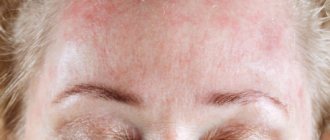
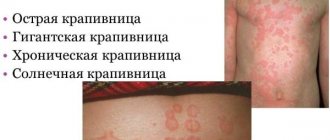
![[Photo review] “A Sassy Nation” bodysuit from Black Milk Clothing](https://superlady555.ru/wp-content/uploads/fotoobzor-bodi-a-sassy-nation-ot-black-milk-clothing-330x140.jpg)


